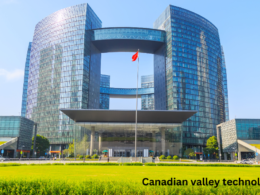õygen is a crucial element for sustaining life on Earth. It is a colourless, odourless gas that makes up approximately 21% of the Earth’s atmosphere. In this article, we will explore the significance of oxygen, its role in human health, sources, environmental impact, medical uses, safety measures, and its applications in various industries.
The Significance of Oxygen in Sustaining Life
Oxygen, often referred to as the elixir of life, is fundamental to human health and the functioning of ecosystems. From the air we breathe to the biological processes within our bodies, oxygen plays a vital role. Let’s delve deeper into the importance of oxygen and its various facets.
Oxygen and Cellular Respiration
At the cellular level, oxygen is essential for the process of cellular respiration. During this process, cells use oxygen to convert glucose into adenosine triphosphate (ATP), the molecule that fuels cellular activities. Without oxygen, cells would be unable to produce sufficient energy, leading to cellular dysfunction and ultimately cell death.
Read Me:Jeansato: Revolutionizing Comfort and Style
Oxygen and Brain Function
The brain is one of the most oxygen-demanding organs in the human body. Adequate õygen supply is crucial for maintaining cognitive function, concentration, and overall mental acuity. Even a brief interruption in oxygen supply to the brain can have severe consequences, such as loss of consciousness or brain damage.
Sources of Oxygen
Atmospheric Oxygen
The Earth’s atmosphere is composed of approximately 21% oxygen, making it readily available for breathing. Through the process of photosynthesis, plants play a crucial role in replenishing atmospheric oxygen by converting carbon dioxide into oxygen during daylight hours.
Oxygen Therapy
In medical settings, supplemental oxygen is often administered through õygen therapy to patients with respiratory disorders or those experiencing breathing difficulties. Oxygen therapy can help improve oxygen levels in the blood and alleviate symptoms such as shortness of breath and fatigue.
Oxygen Depletion and Environmental Impact
Deforestation
The depletion of oxygen levels in the atmosphere can occur due to various factors, including deforestation. Trees play a crucial role in oxygen production through photosynthesis. Deforestation disrupts this process, leading to a reduction in oxygen levels and an imbalance in atmospheric gases.
Pollution
Industrial activities and vehicle emissions contribute to air pollution, which can degrade air quality and reduce oxygen levels. Pollutants such as carbon monoxide and sulphur dioxide can react with oxygen, further depleting its availability for human and environmental health.
Medical Uses of õygen


Treatment of Respiratory Disorders
Airway therapy is commonly used to treat respiratory disorders such as chronic obstructive pulmonary disease (COPD), asthma, and pneumonia. By increasing the concentration of õygen in the blood, oxygen therapy helps alleviate breathing difficulties and improve overall oxygenation.
Surgical Procedures
During surgical procedures, supplemental oxygen is often provided to patients to ensure adequate õygen supply to tissues and organs. This is particularly crucial during surgeries that require anaesthesia, as anaesthesia can suppress breathing and decrease oxygen levels in the blood.
Oxygen Therapy Devices
Oxygen Concentrators
õygen concentrators are medical devices that extract oxygen from the surrounding air, concentrate it, and deliver it to the patient through a nasal cannula or mask. Unlike oxygen tanks, concentrators do not require refilling and can continuously provide oxygen as long as they have a power source.
Safety Measures for Handling Oxygen
Storage
Oxygen should be stored in well-ventilated areas away from heat sources and flammable materials. Proper ventilation helps prevent the buildup of oxygen-rich environments, which can pose a fire hazard.
Transportation
When transporting oxygen cylinders or concentrators, secure them in an upright position to prevent leakage or damage. Avoid exposing oxygen containers to extreme temperatures or rough handling during transportation.
Usage
During oxygen therapy, ensure that equipment, such as tubing and masks, is clean and free from contaminants. Follow prescribed oxygen flow rates and monitor patients closely for signs of oxygen toxicity or respiratory distress.
Oxygen in Industry
Metallurgy
Metallurgical operations, including steelmaking and metal cutting, rely heavily on oxygen. The process of steelmaking involves blowing oxygen into molten iron in order to enhance its quality and eliminate impurities. The oxy-fuel cutting process also makes use of oxygen to weld and cut metals efficiently.
Chemical Production
In the chemical industry, oxygen serves as a feedstock for the production of various chemicals and industrial gases.In various processes, such as oxidation, combustion, and synthesis, oxygen creates a wide range of products, including plastics, fertilizers, and pharmaceuticals.
Conclusion
In summary, oxygen is a fundamental element that sustains life on Earth and plays a crucial role in human health, environmental balance, and industrial processes. Understanding the significance of oxygen and implementing measures to conserve its availability is essential for ensuring the well-being of both current and future generations.
FAQs (Frequently Asked Questions)
Is oxygen therapy safe for long-term use?
When used in accordance with healthcare professionals’ recommendations, oxygen therapy is generally safe. However, prolonged exposure to high concentrations of oxygen may lead to respiratory complications.
Can oxygen concentrators be used at high altitudes?
Yes, oxygen concentrators can be used at high altitudes to alleviate symptoms of altitude sickness and hypoxia. They work by extracting oxygen from the surrounding air, making it available for breathing.
How does oxygen affect the environment?
While oxygen is essential for supporting life, its depletion due to factors such as deforestation and pollution can have detrimental effects on ecosystems. Maintaining a balance in atmospheric oxygen levels is crucial for environmental sustainability.
Are there any risks associated with transporting oxygen cylinders?
What measures can individuals take to conserve oxygen in the environment?
Individuals can contribute to conserving oxygen in the environment by planting trees, reducing carbon emissions, and supporting initiatives aimed at protecting natural habitats and ecosystems.











